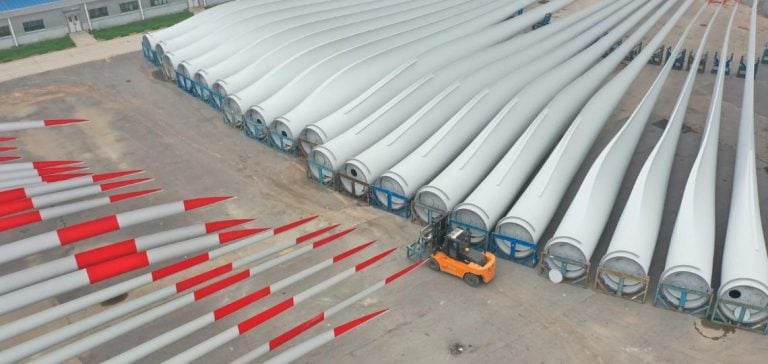The U.S. Department of Energy (DOE) has announced the award of $3.6 million to six teams working on the recycling of wind turbine materials.
The funding, which includes cash awards and vouchers for access to DOE national laboratories, is part of the American-Made Challenges program, supported by the Bipartisan Infrastructure Law.
The aim of this initiative is to develop innovative solutions for managing the end-of-life of wind energy components, while strengthening the independence of national supply chains.
The fast-growing wind energy sector in the United States is confronted with a number of issues relating to the life cycle of wind turbines.
While the majority of components can be recycled or reused, around 10-15% of materials, such as fiberglass composites or the rare earths used in magnets, have no commercial-scale recycling solutions.
The stakes are therefore high, all the more so as demand for these materials is increasing in parallel with the rise of renewable energies.
Innovative technologies for sustainable materials management
The six winning teams, from different American states, were selected for the viability and innovation of their projects.
They proposed solutions ranging from the recovery of rare earths to the transformation of composites into reusable materials.
Among the award-winning companies, Cimentaire (Houston, Texas) stood out for its wind composite conversion technology, while GreenTex Solutions (Charleston, South Carolina) focused on reusing glass fibers from blades.
Others, such as WIND REWIND (Orono, Maine), offer methods for extracting critical elements from turbine magnets.
These technologies are aimed at rapid commercialization, as the industry seeks to minimize its dependence on imports and create a circular economy for renewable energies.
These solutions not only meet immediate recycling needs, but also enable more efficient use of resources in the future.
Towards a circular economy in the wind power sector
As wind farm installations accelerate, the management of end-of-life materials is becoming a strategic priority.
Industry players are aware that to achieve the sector’s decarbonization objectives, it is not enough to invest in clean energy production; it is also crucial to reduce the impacts associated with the processing of used materials.
Through this initiative, the DOE is encouraging American companies to innovate in order to solve the problems of large-scale recycling, with technologies capable of adapting to industrial needs while strengthening the country’s energy independence.
The reuse of materials such as fiber composites and rare metals reduces pressure on raw material supplies, which often come from volatile or geopolitically unstable markets.
So, by developing domestic solutions, the USA is seeking to protect itself against interruptions to its supply chains.
Long-term outlook for the industry
The DOE announcement is part of a series of initiatives to advance domestic energy technologies.
Although wind turbine recycling represents only a small part of the energy sector’s current needs, it is a critical element for the future.
The stakes are all the higher as the number of wind farms is set to continue growing over the coming decades.
At the same time, the winning teams in this final phase will have the opportunity to continue perfecting their technologies until 2025, when they will present their advances at a Pitch Day event organized by the DOE.
Beyond wind turbine recycling, this initiative highlights the United States’ ability to innovate in the field of renewable energy.
By creating local, sustainable solutions, the country is arming itself to face the challenges of the energy transition, while consolidating its position as market leader in green technologies.






















